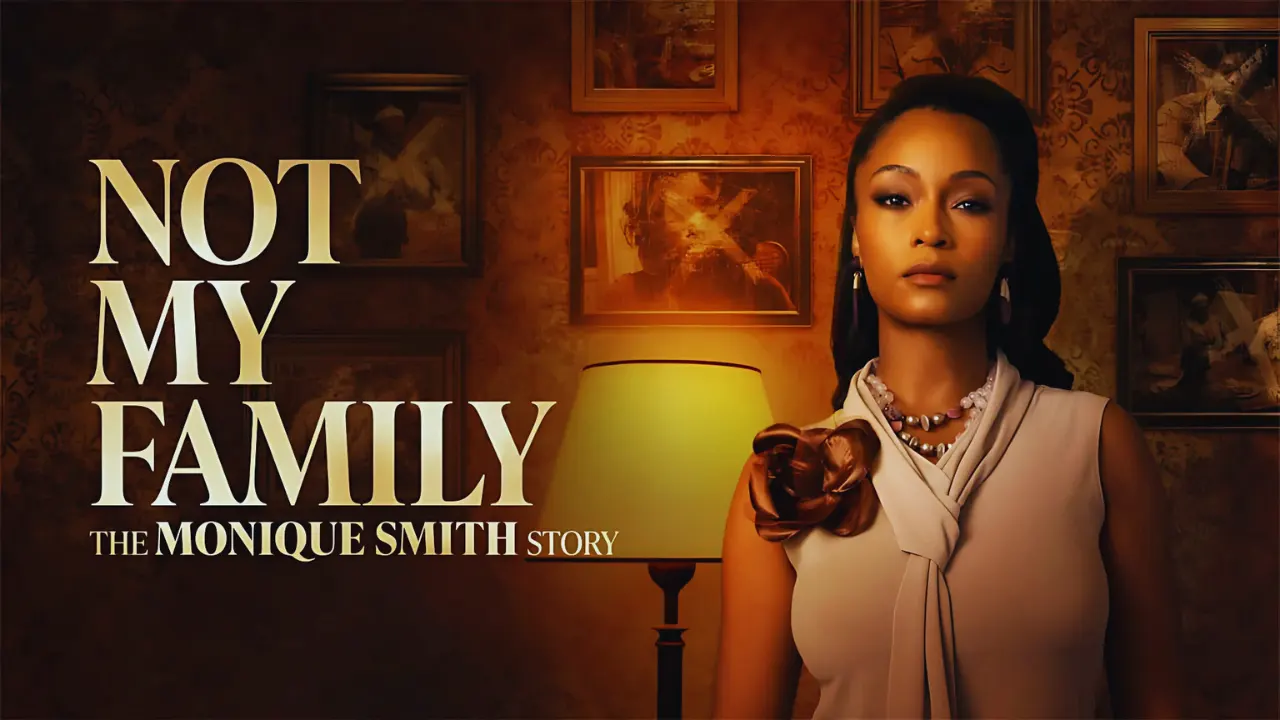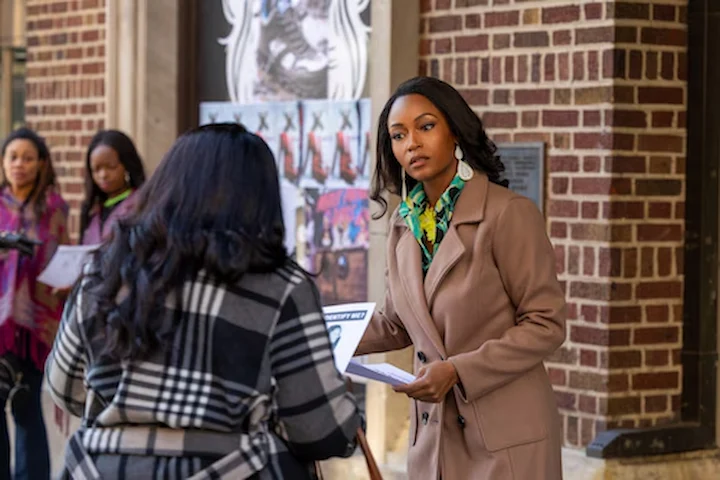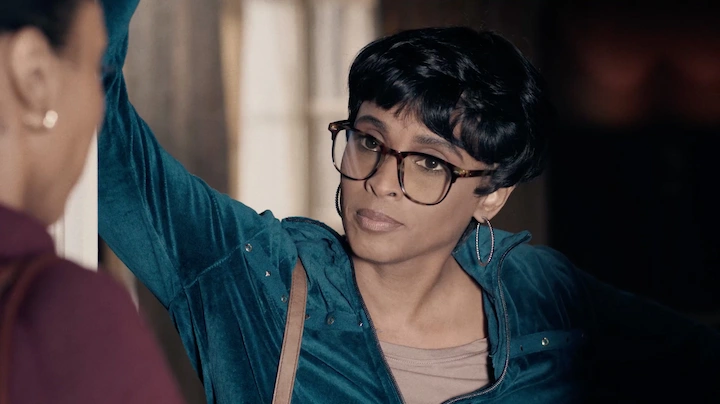The Truth Behind ‘Not My Family’: Monique Smith’s Real-Life Journey of Discovery
In Lifetime’s movie Not My Family: The Monique Smith Story, based on a true story, a woman discovers that her adoptive family is not her biological one. Monique Smith endured years of abuse until she uncovered a shocking truth that changed everything.
This article explores the real individuals behind the characters and Monique’s journey of seeking her origins. Her story offers profound insights into family identity, resilience, and overcoming childhood trauma, raising important questions about personal connections and identity.
What Monique Discovers: The Repercussions of Being Found
Abuse was a constant in Monique Smith’s home as she grew up. Her mother, named Elizabeth in the Lifetime movie, frequently whipped her. She was reportedly sexually abused at home by two uncles.
Monique said she felt different than everyone in her family. Years later, she never found out why. Monique escaped her abusive home at 18. Later, she uncovered an incredible secret. Her birth mother was not the woman who raised her.
This revelation rocked Monique’s world. “I was already disconnected from her, disconnected from my childhood,” Monique said in a real interview. “This was a woman who, if I would walk into a room, would throw something at my head for no reason.
The Lifetime movie depicts these painful moments from Elizabeth’s perspective. Although the film refers to her as Elizabeth, that is not the real name of the woman who raised Monique. The filmmakers altered some names to protect identities.
Monique attempted to press charges on her non-biological mother for identity fraud and abuse. These attempts failed. Realizing that Monique had lived with an entirely different family, she sought her true self and traced her heritage.
We Were Going To Find Margaret: A Quest For Monique’s Birth Mother
In the Lifetime film, Monique’s biological mother is Margaret. Unlike Elizabeth, this name was not amended for the film. And yes, Monique’s real birth mother was Margaret Conyers.
Finding information about Margaret wasn’t easy. In real life, Monique receives assistance from a genealogist named CeCe Moore. Through DNA testing and research, Monique contacted one of her biological sisters. This sister explained some critical things about Margaret’s life.
Immigrant Margaret Conyers lived in the Bronx in New York. She was the mother of seven children, Monique among them. From what Monique had learned, Margaret was a teenage mother and possibly a runaway.
If I had to guess, I would think that she never graduated. Tragically, Margaret passed away at the young age of 34 due to a drug overdose.
It meant Monique wouldn’t get to meet her birth mother or hear directly from her what happened. One question about Monique’s life remains unanswered: how she got placed with another family.
Was she kidnapped? Was she given away? Did Margaret know what had happened? “Did my mother play a role? Did she not play a role? Did my mother know? Did she not know? This was not something that they had agreed to.
“I don’t know what happened,” Monique has said. During the film, Monique’s biological sister tells her that Margaret loved and thought about her missing daughter daily. It is unclear exactly how this conversation played out in real life.
Monique’s Search: The Real Helpers
Stacia is an investigative reporter who aids Monique in her quest to learn more about her past. She is introduced in the Lifetime film. Though this character is not entirely fictional, she merges multiple people who assisted Monique.
As it happened, a reporter for The Baltimore Banner assisted Monique in obtaining her first birth certificate. This reporter put Monique in touch with New York’s Vital Records office. It was a critical first step in establishing her true identity.
The film tracks Stacia, following Monique as she interrogates people from her past. Due to their limited knowledge of Monique’s early life, they face multiple challenges, representing the real challenges Monique faced while searching.
A breakthrough in the film comes when a detective in Maryland puts Monique in touch with a genealogist named Trinity. In real life, this genealogist was CeCe Moore, a well-known DNA expert who solves family mysteries.
The filmmakers merged various real people and fictionalized a few details to deliver a more streamlined story. Not every frame corresponds to broader realities, but the movie conveys the spirit of Monique’s journey to finding herself.
Discovering Who You Are — Late in Life
Discovering that your whole family history differs from what you thought presents enormous emotional challenges. In Monique’s case, it was after years of abuse by someone who wasn’t even her mother by birth.
Monique had to start over when it came to her identity. She went from being a woman with an abusive mother to someone whose entire back story was murky. Such a reversal in identity touches on multiple aspects of human life.
Margaret Conyers was a new piece of her puzzle. While she never met her biological mother, learning about her helped Monique gain a better understanding of herself. She said her biological sisters, too, provided a new sense of family.
The film depicts Monique’s journey through anger, confusion, and, ultimately, some degree of peace. These emotional arcs mirror the actual psychological toll of such discoveries. Many people discovering secret adoptions or family switches later in life have similar emotional reactions.
Monique’s story raises questions about what makes someone family. Is it biology? Shared experiences? Love? For Monique, these queries have no simple answers—they are gnarlier than that.
FAQ
Q: Is Not My Family: The Monique Smith Story a ue s
A: Yes. As its title suggests, the Lifetime movie is inspired by the real-life experiences of Monique Smith, who, upon getting older, learned that the woman who raised her was not her biological mother.
Q: Did Monique get to meet her birth mother?
A: No. Monique’s biological mother, Margaret Conyers, died at 34 of a drug overdose before Monique learned the truth about her identity.
Q: How did Monique learn about her biological family?
A: We’re unsure of the exact moment as publicly available sources don’t include it. However, Monique partnered with a few helpers —, including reporter and a genealogist n, CeCeoore —, torack her real family history.
Q: Is Monique aware of what happened to end up with another family?
A: No. To this day, Monique isn’t sure how she became separated from her biological family. She doesn’t know if it was a deal, an abduction, or something else.
Q: Did Monique reach out to any biological family members?
A: Yes. Genealogist CeCe Moore aided Monique in finding at least one biological sister, who passed on information about their mother, Margaret.
Final Words
Monique Smith’s journey highlights the importance of truth and understanding one’s origins. Despite facing abuse and uncovering that her identity was built on lies, she persevered in seeking answers. Her story reflects the complexity of family ties, whether biological or born from shared experiences.
The Lifetime movie Not My Family takes some creative liberties, but it captures the essence of Monique’s remarkable story. While the themes of belonging, identity, and family are universal, her extraordinary circumstances make her journey unique.
What truly stands out is Monique’s resilience and her courage to escape an abusive family at 18 while searching for her roots. Although some questions remain unanswered, her quest for truth can inspire others with complex family histories.
Table of Contents



